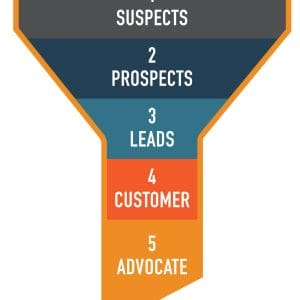The founder of Revlon cosmetics, Charles Revson, understood marketing better than most. “In the factories we make perfume,” he once said, “but in the stores we sell hope.” Revson understood the difference between a brand’s unique selling point and its emotional selling point (ESP).
In these days of parity products, “me-too” services and an expanding global marketplace, it is often hard to point to something truly unique about a brand. But even if you are able to ferret out a truly unique selling proposition, this is not necessarily the most important part of your messaging. You must think beyond the rational proposition.
Consider this: whether it’s bass boats, automobiles or breakfast cereal, people’s buying behavior is connected more to their brain’s limbic system than to their brain’s neocortex. The limbic system is the part of the brain that governs the emotional part of you. The neocortex governs the intellect. To put it another way: we shop with our heart.
So how should this affect your messaging strategy? The answer is simple. Your marketing team must spend as much energy identifying your product or service’s emotional selling point as they do its unique selling point.
So if you’re selling fragrances, you are actually selling hope. If you’re selling motorcycles, freedom. Beer, community. Ice cream, comfort. If you’re selling assisted living communities, you are really soothing the guilty feelings of adult children dealing with their parent’s dementia and decline.
This is as true for B2B advertising as it is for B2C.
So if you’re selling fragrances, you are actually selling hope. If you’re selling motorcycles, freedom. Beer, community. Ice cream, comfort.
Think about it. What is the emotional component of your business? What do you want your customers to feel? When FedEx launched their next-day delivery service they wrapped it in the emotional selling point of helping you not get fired. You can tap into fear just as effectively as any other emotion.
2017 Update:
At Agency Creative, we start most client on-boarding with an overview of a sales and marketing funnel like the one below. In the blog above, we talked about why your ESP is important in converting prospects and leads into customers, but identifying and making use of your brand’s emotional selling point is important at every step in the funnel!


In a FastCompany blog, author and behavioral change therapist Douglas Van Praet said:
The most startling truth is we don’t even think our way to logical solutions. We feel our way to reason. Emotions are the substrate, the base layer of neural circuitry underpinning even rational deliberation. Emotions don’t hinder decisions. They constitute the foundation on which they’re made!
Douglas Van Praet
So yes, your ESP is important in drawing people in and converting potential suspects, prospects, or leads into customers. But to get people excited about your business and create advocates, you need to continue tapping into that emotion and delight them as customers. Businesses that create positive experiences for customers bring in 5.7x more revenue than competitors who don’t, according to this report published by Forrester in 2016.
If you need help figuring out what your emotional selling point is, we’d be glad to help. Give us a call at 972.488.1660.
We are a Dallas advertising agency with expertise in integrated marketing.






